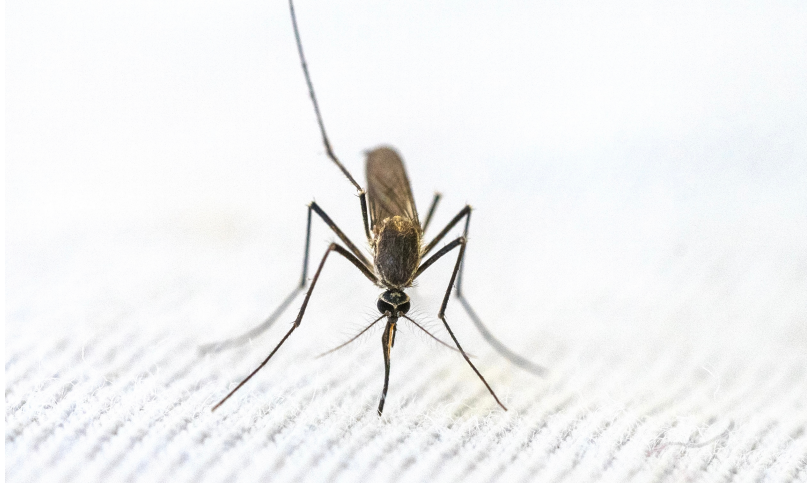Cameroon is set to pioneer the regular administration of a novel malaria vaccine to children, marking a significant milestone in the ongoing, decades-long initiative to combat the prevalence of mosquito-transmitted malaria in Africa.
The launch of this vaccination campaign, scheduled to commence on Monday, is viewed by officials as a crucial step in addressing the disease that is responsible for 95% of global malaria-related fatalities on the continent.
At the age of 86, renowned malaria expert Brian Greenwood finds himself witnessing the realization of a dream he dedicated four decades of his life to achieving—a successful malaria vaccine.
Greenwood, an active researcher at the Royal Society of Tropical Medicine and Hygiene, reflects on the lengthy journey marked by numerous challenges.
His commitment to developing a malaria vaccine traces back over a century when initial attempts were made through studies in birds.
Malaria Vaccine Progress and Cameroon’s Initiative
As Greenwood reflects on the past, Cameroon, a Central African nation grappling with 2.7 million malaria cases annually, marks a historic moment.
Moreover, the country initiates the world’s first routine childhood malaria immunizations using RTS,S or Mosquirix, a vaccine manufactured by GlaxoSmithKline. This groundbreaking vaccine targets sporozoites—the transmissible forms of the malaria parasite—neutralizing them before they can invade the liver and proliferate.
Cameroon, burdened by 48 percent of all hospital admissions and 67 percent of childhood deaths attributed to malaria, anticipates relief through this vaccination program.
However, the hope is that this initiative will alleviate the strain on the nation’s healthcare system, addressing not only medical concerns but also the broader socio-economic impact of malaria.
Malaria Vaccine Program Milestones
Mohammed Abdulaziz, the head of disease control and prevention at Africa CDC, emphasizes the far-reaching impact of the vaccine beyond clinical benefits. Malaria’s role in school absenteeism, anemia, and impaired cognitive development adds urgency to the implementation of the vaccine.
The initiative aims to break the cycle of adversity that has plagued youth for an extended period.
Despite extensive efforts to combat malaria, the disease claimed 608,000 lives in 2022, with 95 percent of the fatalities occurring in Africa. Young children, with developing immune systems, remain the most vulnerable.
UNICEF reports that a child under 5 succumbs to malaria nearly every minute.
Cameroon’s vaccine rollout is just the beginning, with twelve African countries slated to receive a combined total of 18 million doses of RTS,S over the next two years through the Gavi vaccine alliance. Burkina Faso, Sierra Leone, Benin, and others are set to follow, emphasizing the program’s focus on children due to availability constraints.
While the vaccine undoubtedly holds promise, criticisms have emerged regarding the perceived lack of urgency.
The efficacy of RTS,S was demonstrated in clinical trials in 1998, yet the World Health Organization (WHO) only officially recommended its use in 2021. This delay has sparked concerns, considering the significant number of lives lost since the initial trials.
Coverage disparities also raise questions. With over 30 African countries expressing interest in routine malaria vaccination programs, difficult decisions about prioritization have been made.
Jaishree Raman, a malaria researcher, acknowledges that coverage won’t be as widespread as desired, leaving high-burden regions underserved.
The Role of a Second Malaria Vaccine
Addressing the urgency and coverage gaps, a second malaria vaccine called R21, developed by scientists at the University of Oxford, enters the scene.
The WHO recently prequalified R21, recognizing its efficacy in reducing symptomatic cases by 75 percent over a year. Priced at $2 to $4 per dose, R21 presents a more affordable option than RTS,S, with the Serum Institute of India, a key player in vaccine production, contributing to its scalability.
Aurélia Nguyen, chief program officer at Gavi, anticipates R21’s availability in May or June 2024. However, logistical challenges, particularly the stringent refrigeration requirements within the “cold chain,” pose hurdles to the vaccine’s distribution to remote areas.
The number of required doses and long-term durability of both RTS,S and R21 raise significant concerns.
WHO guidelines advocate for a four-dose schedule in children from around five months of age, with an optional fifth booster dose a year later.
Questions linger about the practicality of achieving similar coverage in real-life settings, especially in high-risk areas.
Furthermore, the uncertainty regarding the long-term efficacy of the vaccines and the potential evolution of the malaria parasite pose challenges.
Past studies have shown diminishing efficacy over time, emphasizing the need for sustained efforts in research and development.
Funding Challenges and Sustainability
Amid the optimism surrounding vaccine developments, funding emerges as a critical challenge.
The current reliance on foreign donors like Gavi and UNICEF to supply vaccines raises concerns about sustainability. Jaishree Raman emphasizes the necessity of increased domestic funding, recognizing the transient nature of donor priorities.
Efforts to shift the burden of vaccine production to Africa are underway. Africa CDC is working to enhance manufacturing facilities across the continent, while the Serum Institute explores tech transfer discussions with manufacturers in Nigeria and Ghana to enable R21 production locally.
As the world witnesses the dawn of a new era in the battle against malaria, additional vaccines are on the horizon. BioNTech and Sanaria, a Maryland-based biotech company, are actively involved in developing mRNA and alternative vaccines for malaria.
Brian Greenwood remains optimistic about further progress, envisioning affordable vaccines with fewer doses and extended efficacy.
“There’s a lot going on,” Greenwood remarks. He envisions a future where the benefits of vaccination could extend beyond vulnerable populations, potentially reaching agricultural workers and those venturing into forested areas.
Despite imperfections and challenges, the rollout of RTS,S symbolizes a significant step forward in safeguarding children’s lives from malaria across the African continent.
“For a long time, we have been waiting for a day like this,” expresses Mohammed Abdulaziz.
The introduction of the vaccine brings more than just hope—it marks a tangible stride toward ending the pervasive threat of malaria in Africa. The journey, spanning generations, has culminated in a momentous achievement, propelling the fight against malaria into a new and promising phase.

